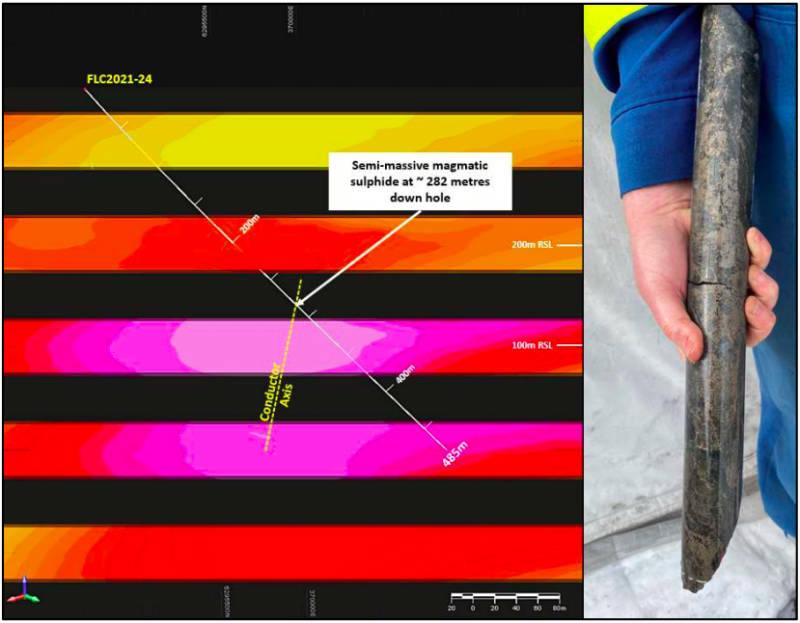Corazon drilling unlocks new nickel-copper zone at Lynn Lake

Pic: John W Banagan / Stone via Getty Images
Corazon’s hunt for nickel-copper at its Lynn Lake project has borne fruit with the discovery of a new magmatic sulphide zone in a new area.
Visual observation of core from the first diamond hole (FLC2021-24) at the project in Canada’s Manitoba Province revealed definitive evidence of significant sulphide mineralisation.
Here’s the important bit.
The strongest mineralisation – including nickel-copper sulphides – was intersected on trend from the main geophysical conductor in the first target area, proving the effectiveness of the MobileMT geophysical survey in targeting nickel sulphides.
Corazon Mining (ASX:CZN) says the discovery is also important as it opens up a new exploration front that includes multiple geophysical conductors for testing.
The second hole in the program, which targets a separate strong conductor about 250m west of the first hole, is currently underway while planning is being carried out for downhole electromagnetic work to be carried out to define the main conductor body at FLC2021-24 prior to follow-up drilling.
Site preparations are also underway for drilling at the high-priority South Pipe target about 2km to the south, which is the largest conductive anomaly in the area.

Drilling Details
The company’s drill program is testing several high-priority targets including recently identified geophysical conductors that are situated immediately west of the Fraser Lake Complex/Matrix Trend.
This will initially test at least three targets and comprises about 1,600m of diamond drilling with follow-up work depending on results.
FLC2021-24 was completed to a depth of 485m and drilled through about 320m of prospective gabbros and norites, which are typical of the host rocks within the Lynn Lake Mining Centre.
The intersected sulphide mineralisation is consistent with the Lynn Lake style of mafic/ultramafic intrusive magmatic sulphide systems.
These host sulphides varying in concentrations from massive to weakly disseminated that commonly decrease in content away from the intrusive centre or structural control.
Corazon noted that before its closure in 1976, the Lynn Lake Mining Centre operated for 24 years with an average grade of 1.02 per cent nickel and 0.54 per cent copper.
This article was developed in collaboration with Corazon Mining, a Stockhead advertiser at the time of publishing.
This article does not constitute financial product advice. You should consider obtaining independent advice before making any financial decisions.

UNLOCK INSIGHTS
Discover the untold stories of emerging ASX stocks.
Daily news and expert analysis, it's free to subscribe.
By proceeding, you confirm you understand that we handle personal information in accordance with our Privacy Policy.








